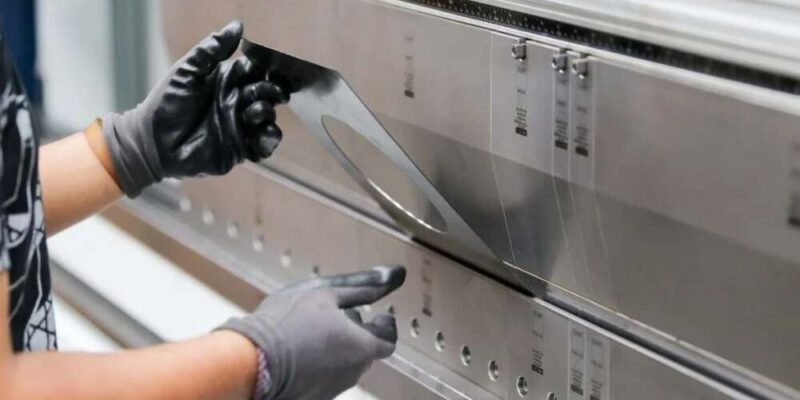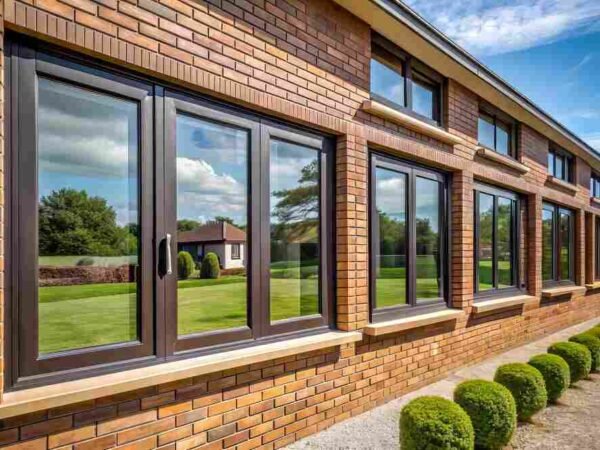Sheet metal fabrication is a crucial manufacturing method, specifically in industries that depend on metal components for electronic equipment, automobiles, aerospace, and many more. Sheet metal prototypes can be tested for functionality, design, and viability before mass production. This article will explain how fabricating a sheet metal prototype is significant in modern manufacturing.
The Basics of Sheet Metal Prototype Fabrication
Sheet metal prototype fabrication is the method that involves cutting, bending, folding, and assembling metal sheets to make prototypes of various items. These prototypes are vital in determining whether the design meets the expected outcome before production. Contrary to traditional manufacturing techniques, prototyping is about creating an operational model that can be altered and improved.
The materials used for sheet metal prototypes vary from aluminum and steel to copper, brass, and alloys like stainless steel. The sheets typically range from 0.5 to 6 millimeters thick, making them flexible but strong enough for the required testing.
The Role of Prototypes in Manufacturing
Prototypes are essential for the product development process. With prototypes made of sheet metal, engineers and designers can physically interact with the model to determine if it works as intended. It allows an improved assessment and enables stakeholders to experience the tangible aspects of the concept.
Prototypes have many advantages for manufacturing:
Design Validation: Prototypes made of sheet metal benefit ensure that the design functions and can be used intently before any investment is made in mass production.
Cost Efficiency: Building prototypes helps find issues earlier, lessening the chances of mistakes in the final product. It consequently saves the company money.
Functionality Testing: Prototypes allow engineers to determine if the product can fulfill its purpose in various conditions.
Customer Feedback: All stakeholders and customers can provide feedback about the physical model before production to ensure it is a product that is in line with the needs of their customers.
Design Modifications Customized: Prototyping allows engineers and designers to modify and customize parts easily. It helps them verify designs without the requirement to run several production runs.
Steps in Sheet Metal Prototype Fabrication
Several steps are involved in the fabrication of sheet metal prototypes. The following are the most important steps involved in this process:
Design and CAD Modeling
The first step in prototype sheet metal fabrication is to design the component. Engineers use Computer-Aided Design (CAD) software to design elaborate sketches and models. It covers all dimensions, shapes, and other details required for the prototype. The CAD software permits easy adjustments and simulations, which helps to ensure that the design can be converted into a real-world prototype.
Material Selection
The next step is to select the proper material to build the prototype. The chosen material will depend on the intended use of the item. Some common options are:
Aluminum: Lightweight and resistant to corrosion; Ideal for aerospace and automotive industries.
Steel: Durable and strong; Ideal for structural components.
Copper has excellent conductivity in electronic and electrical products.
Brass: Provides good resistance to corrosion. It is commonly used in plumbing and decorative parts.
The material will impact the prototype function, fabrication process, and cost.
Laser Cutting and CNC Machining
After the design has been finalized, the next step is to cut the metal sheets into the shape you want. Modern techniques such as cutting with lasers and CNC cutting are employed to warrant the highest level of precision. Laser cutting applies a powerful laser to create intricate designs into the sheet of metal, which allows precision and precise cuts. CNC machining uses computer-controlled machines to mold the metal to the desired shape and ensure high-quality precision.
Bending and Forming
The next step involves shaping the sheet metal by bending or forming in most cases. These processes give the sheet metal the necessary curves and angles. The bending process is carried out together with presses that apply forces to bend the material along an axis straight. Forming, on the other hand, uses punches and dies to make the metal shape in three dimensions.
Welding and Joining
After the metal sheets are bent and cut into the desired shape, they are joined by welding or other methods. Welding involves the process of assembling metal pieces through the heat. For more fragile parts, methods like bolting or riveting could be utilized instead. The joining process ensures that the different parts in the model are safely joined.
Surface Finishing
The final step of prototype sheet metal fabrication involves surface treatment. This step is crucial not just for aesthetics but as a protection against wear and corrosion. Different surface treatments are applied, like paint, powder coating, and vacuum plating. Vacuum plating can be described as a finishing procedure in which a small amount of the material (often metallic) is applied on the surface of sheet metal in a vapor environment, increasing the strength and appearance of the model.
Inspection and Testing
Before a prototype is approved, it is subjected to rigorous tests and examination. The prototype is evaluated for finishing and dimensions. This test helps to determine any flaws or problems with the design that should be addressed before moving on to mass production.
Advanced Techniques in Sheet Metal Prototype Fabrication
While the fundamental fabrication method of prototype sheet metal is consistent, some more advanced techniques can benefit and improve the process. These advancements allow for faster, more precise, and efficient fabrication.
CNC Punching
CNC punching cuts metal sheets. This method offers high accuracy and is automated to create intricate shapes quickly.
Water Jet Cutting
The water jet is a process that uses a high-pressure stream of water infused with an abrasive material to cut through the metal. This technique is ideal for cutting metals vulnerable to heat since it doesn’t create the same zones of heat affected by laser cutting.
Precision Welding
Modern methods of precision welding, like laser welding, permit highly precise welds that do not affect the strength of the original. It is particularly beneficial in areas like automotive and aerospace, where precision is essential.
Industries Utilizing Sheet Metal Prototype Fabrication
A variety of industries depend heavily on sheet metal prototypes to aid in the development of their products. Some of the common ones are:
Automotive Industry: Prototypes made of sheet metal are utilized for developing automobile bodies, engine components, and structural components.
Aerospace Industries: Aerial parts, including frames and panels, are usually designed with sheet metals.
Electronics: Many electronic devices, such as enclosures and cases for delicate components, are created through prototyping with sheet metal.
Medical Equipment Medical: Devices and equipment frequently require metal prototypes to be tested before production.
Consumer Goods: All things from furniture to appliances often require metal prototypes to validate design.
Conclusion
Sheet metal prototype fabrication is essential for the production process in various industries. It allows you to try, improve, and verify designs before leaping production to full scale and saves time, money, and resources. As technology and innovation advance, sheet metal prototype fabrication will become even more efficient and accurate as future versions of the products are created.













